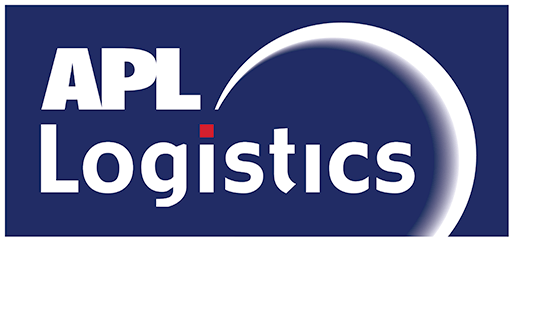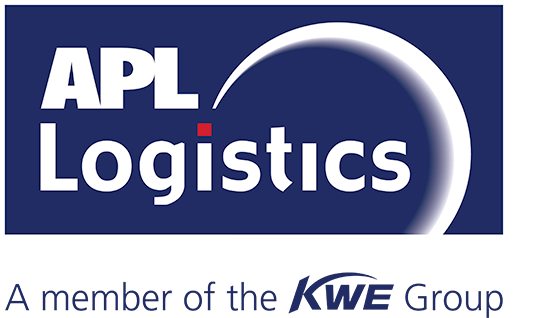October 2, 2021 in PODCASTS
Keeping Control In A Turbulent Year – UK
https://www.youtube.com/watch?v=MQA3EfpGwrc
Today, the combination of Brexit, Covid-19, and changing trade patterns has created a perfect storm. In this challenging landscape, UK businesses must rethink their supply chain strategies and embark on bold transformations to fuel rapid change.
Today, the combination of Brexit, Covid-19, and changing trade patterns has created a perfect storm. In this challenging landscape, UK businesses must rethink their supply chain strategies and embark on bold transformations to fuel rapid change.
In this episode of The APLL Pulse Podcast, Mark and Mathew share actionable, real-time insights on the UK supply chain.
April Chapman (Host): Hello, everyone. I’m excited to introduce my guest today as we turn our attention towards the UK. Our first guest, Mark Ward, is the Managing Director of APL Logistics, UK. Mark has worked with notable organizations, led several companies to dramatic growth and he has delivered multimillion dollar pound savings. Our second guests is Matthew Woodhouse, our Operations Manager at APL Logistics, UK. Matt has worn multiple hats across different industries, driven multimillion dollar commercial products and provided business consulting to the blue-chip companies. Welcome to the show, Mark and Matt.
Mark Ward: Thank you for the warm welcome.
Matthew Woodhouse: Thank you, April.
April Chapman: So, let’s dive into our topic today. Mark, it goes with us saying that this year has been very interesting for the supply chain industry. Can you describe some of the specific challenges that are happening over in the UK?
Mark Ward: From a UK perspective, I mean, we’re traditionally a destination country and we source extensively from around the globe. So, the challenges we have in the UK are pretty similar to what you would see in Europe, the US because of the upstream volatility. The ocean freight market is in dire straits, and the fact that mainstream media is covering these shows that it’s a real problem for businesses.
The Turbulence Ahead
Covid, lockdowns, Brexit, Suez Canal have contributed to the lack of capacity that’s not there enough to support the current demand. As a result, we’re seeing carrier and schedule reliability hovering around 40%, which is poor. A normal rate is around 80%.
Adversely, we’re seeing cargo moving for around USD 20,000 per container. These poor services, high rates and volatility are just driving a big problem. There’s also been challenges at the origin. China recently had a breakout of Covid cases. That meant that the consolidation centres had to shut down, causing various bottlenecks.
And it’s been a tough time for the retail industry. Sales are surging since the lockdowns have been lifted, but the retailers are struggling to keep up with the demand. I stay closer to home, so in the UK, we’ve got various haulage issues and shortages of drivers.
Brexit expedited that to some degree because of our reliance on European drivers in the UK, pay conditions, level of training and qualifications that drivers need been considerable. And that’s been a bit of a turn off for people wanting to enter that industry. So, it’s pretty unattractive, and causing the shortfall in drivers. I would say right now, we’re in a perfect storm, you’ve got upstream challenges, in-transit challenges and the downstream challenges.
Businesses today are struggling, and the business leaders are taking a brand new, fresh approach to managing their supply chains, deep diving what they can do differently. So, it’ll be really interesting to see what the landscape will look like next, because by no means is it over.
April Chapman: Matt, I’m assuming you’re seeing the same things, what are your thoughts?
Matthew Woodhouse: With the end of lockdown, and summer holidays are upon us, these are driving the retail numbers. On the supply side, there’s something peculiar about the HGV driver industry. The retirement age is about fifty five, which is fairly young. Last year, many test centers for new drivers were closed, and that meant that drivers passing their HGV license and tests were down by about 60%, as compared to pre-Covid times.
And there’s not enough home-grown drivers or immigrant drivers because of the Brexit complications. So we do see the issues continuing in the short term. On the rate side, many retail customers are trying to tie in long-term, multi-year contracts on the sea freight. Some of the cost is then passed on to consumers and perhaps the winners in all of these are the shipping lines themselves. I know Alpha Liner talks about four hundred percent increase on share prices since pre-Covid time.
Yeah, but I think it continues in the short term, containers are ten times as slow. I can’t really see rates returning to a new normal until at least next year, but it will be a new normal. We don’t think it’ll be the same rates we saw prior to Covid.
These rates are a true reflection of the capacity available, and what customers are willing to pay for ocean freight. So, I think, they will normalize, but not necessarily back to pre-Covid times.
April Chapman: That makes sense. Mark, do you think that these threats have changed the business leaders and their thoughts about supply chain management?
The Value of Diversification
Mark Ward: Yeah, definitely. What we’re seeing is businesses are diversifying their partners. We used to talk about having a supply chain partner that would manage an end-to-end supply chain. What we’re seeing more and more now is multiple parties being introduced to either manage different segments of a supply chain or different geographies within that supply chain. I think that helps to spread the risk.
Sourcing has remained a key focus area for a lot of businesses. Particularly for the UK Retail, sourcing is traditionally very China, India focused. There’s a lot more talk now about near sourcing, regional sourcing, local sourcing, and the challenge with that is always going to be the cost. There’s a reason why products are traditionally coming out of Asia, so cost will be a challenge.
At the same time, we are starting to see businesses move a level of their production, or a proportion of their production, out of Asia and even into Europe. By doing so, they’re able to offset and manage the lead times better, control the inventory that ultimately benefits the consumers. Clearly, it’s more expensive. So, there’s a bit of a trade-off.
Covid is putting more spotlight on how we can be more effective at managing the ocean freight volatility better, going forward.
And finally, we saw more businesses trying to enter strategic partnerships that step away from the transactional ways of working.
We often work with businesses who want a different type of relationship, something that’s more focused on giving them a reliable, innovative and a value-driven approach rather than traditional, transactional service provider approach. And I think in a crisis equation, you need a real partner. So I think some of the key elements that will see business leaders focus and draw more into as time goes by.
The Path to Success
April Chapman: I think now is a really good time for organizations to think about ways that they can do things better. So Matt, being in the day-to-day operations, could you share the successes you’d seen on the grounds?
Matthew Woodhouse: I think it’s important to stay nimble and watch the market carefully. For example, we had a retail customer who joined us during the pandemic. Their stores were closed across the UK, and they invested a significant amount of time into driving online sales. They brought in new brand ambassadors and changed the sourcing patterns, just like Mark mentioned.
Something specific to this customer was that they were bringing in a lot of furniture and the carriers, especially the way the ocean freight market is going, carriers don’t really want to load bulky, low value of furniture. Because of that, the retailer was really trying to build up furniture stocks, as and when they could find space for it. As a result, it meant for us at the UK, at the destination, to find alternative solutions to store that furniture.
So we had to work with different providers to introduce temporary storages, as a way of keeping furniture out of the port so that we don’t incur key rents, and effectively keeping it out of the distribution centres.
To ensure success, we have given extra visibility to our retail customers, to tell them where their furniture was at any given time. We even went to the extent of implanting our people with our customers at their premises to keep an eye on their cargo.
April Chapman: That kind of reminds me of playing two games at once, like you’re playing chess. You’re strategically trying to place things in the places that they need to go. You’re also putting a puzzle together because you have to make these pieces fit where you need them to fit. And you have to let the customer see all what’s going on and where it is and what the next move might be.
Well, I think this is an interesting discussion. Thank you so much for joining me today.
Mark Ward: Thank you, April.
Matthew Woodhouse: Thank you.


